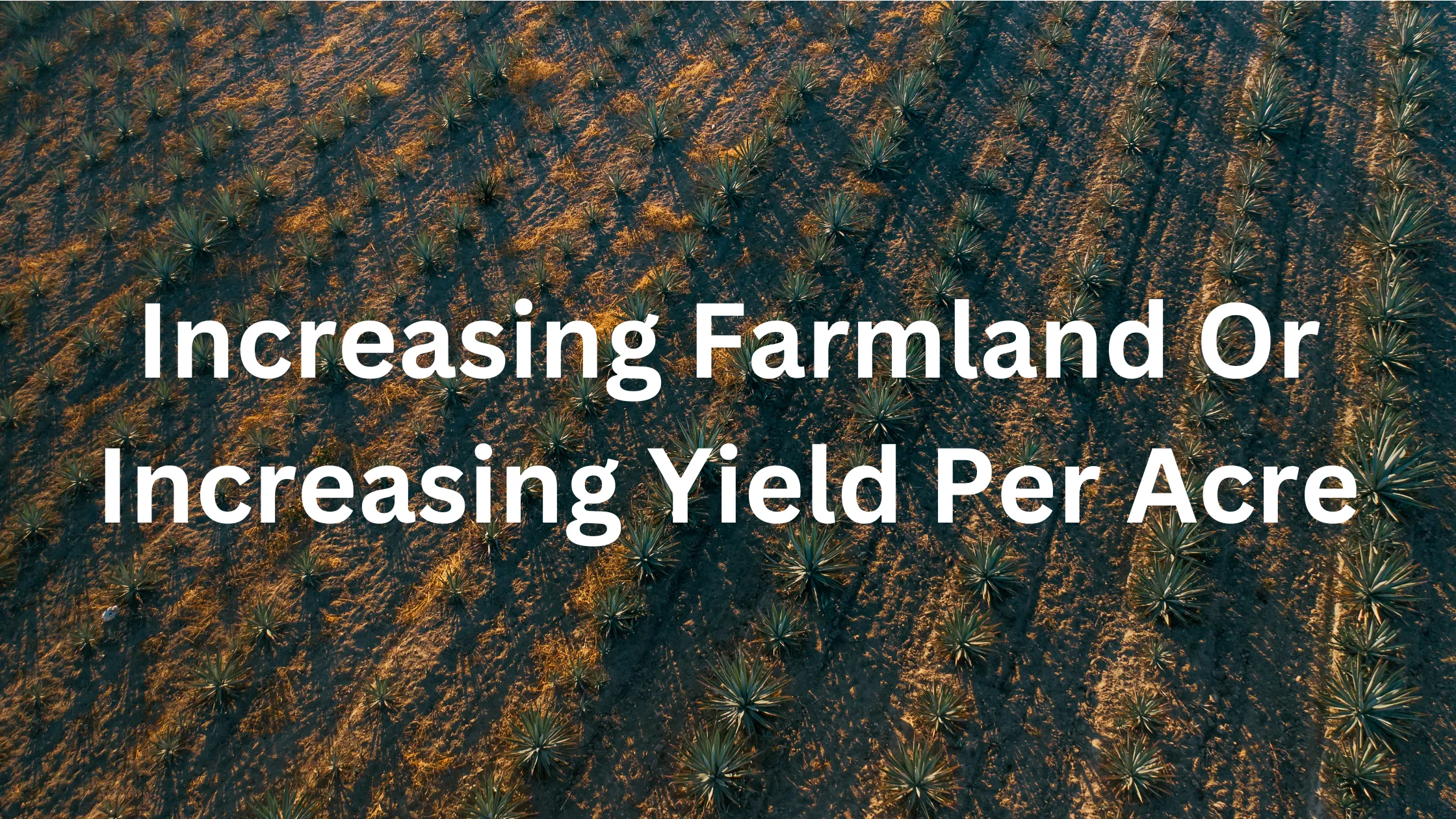With a rising global population, the challenge of food security increases. The major question that comes up is whether a larger emphasis should be put on increasing farmland or increasing yield per acre. It goes without saying that both approaches have their pros and cons. In this case, deciding the most efficient approach is very important. This blog will discuss the advantages and disadvantages of both methods while determining which one is smarter from a sustainability standpoint.
The Importance of Farmland
In terms of food production, farmland is paramount because it is where crops are grown and livestock is raised. For example, expansion of farm land is often used as a measure to meet the food requirements of an ever-growing population. Unfortunately, with the ongoing urbanization, industrialization, and deforestation, the amount of arable land is on a consistent decline.
Although increasing farmland may appear as a reasonable option, it has dire consequences for the environment. The expansion of farm land usually results in deforestation, biodiversity loss, and soil erosion. The conversion of forests into agricultural land adds to climate change due to the carbon emission caused by trees being chopped down. Furthermore, thousands of wildlife species may be endangered as farmland is expanded into delicate ecosystems, which often happens due to oil palm or soybean cultivation.
Shifting Focus on Yield Per Acre
To accommodate a growing population with limited pieces of land, improving yield per acre is a more practical method of increasing food sources. Improving yield per acre is the ability to produce increased amounts of food within one piece of land due to increased use of machinery for agriculture, better water supply, and advanced technology.
A focal point of producing food within these methods is precision agriculture, genetic engineering, growing varieties of crops with high yields, and using sophisticated fertilizers. All these techniques increase productivity without necessitating the increase in new landmaking expansion of farm land that is more environmentally friendly. In addition, improving yield per acre lessens the strain on natural ecosystems and forests striving toward a better balance between ecological health and food production.
also read: Farm agriculture land for sale in bangalore
Increasing Farmland or Increasing Yield Per Acre: A Comparative Analysis
When comparing the benefits of increasing farmland or increasing yield per acre, the following metrics must be analyzed:
- Environmental Impact
- Clearing land for farm land usually results in deforestation, erosion of soil, and loss of various species.
- Maximizing the yield per acre attempts to utilize farm land in a manner that doesn’t require more deforestation or destruction of existing habitats.
- Resource Utilization
- Increasing Farm land requires new amounts of water and other chemicals such as fertilizers and pesticides which will contribute to soil and water pollution.
- Minimizing the yield per acre tends to waste more resources than maximizing it through modernized advanced farming techniques.
- Economic Viability
- Buying new tracts of land comes with its own costs in terms of other expenses like maintaining infrastructure.
- Increasing the yield per acre is economically favorable as it leverages scientific innovations on the existing farm land.
- Sustainability
- The problem with increasing farm land over time becomes a super saturated scope of land available as well as the decreasing plausibility of environmentally friendly strategies.
- Increasing the yield per acre enables sustainable means of agriculture to be practiced while assuring food security in the future.
The Importance of Technology in Increasing Yield Per Acre
Technology has always served as an important factor in increasing yield per acre. Some of the primary innovations include the following:
- Development of New Farming Methods: Use of GPS and modern technology in the planting, irrigation, and fertilization processes for efficiency.
- High Yield Variety Crops: Crops designed with advanced features to be more disease and pest-resistant to generate higher yield per acre.
- Improved Soil Nutrient Management: A higher level of productivity is achieved with good soil fertility management without compromising soil health.
- Modern Methods of Irrigation: Reduction in wasted water due to improved irrigation leads to better crop yields.
- Farmers can adopt these technologies and achieve increased yield per acre, leading to low-cost and efficient food production.
Agricultural Future: Increasing Farm land or Increasing Yield Per Acre?
Perpetually pondering which of the two options – increasing farmland or increasing yield per acre – is worthwhile, it becomes evident that increasing yield per acre seems to be the ideal long-term solution. While expansion of farm land might yield some immediate advantages, it does, in fact, cause substantial long-term damage to the environment, as well as deplete natural resources.
To adopt sustainable policies and preserve the environment, innovation in farming techniques, as well as sustainable practices, are vital. Through these measures, increased food security can be achieved while protecting biodiversity and reducing greenhouse gas emissions.
Conclusion
Addressing global food security is dependent on determining which method will provide the optimal solution— increasing farmland or increasing yield per acre— and analyzing the implications of each decision. While both methods have their benefits, increasing yield per acre is arguably more feasible. It is possible to balance out food production and consumption targets with environmental protection efforts through technology and eco-friendly policies.
Increased investment in research, development, and precision agriculture will help in adopting greener techniques, which will ultimately promote a more secure and prosperous future. Shifting focus to increasing yield per acre instead of expanding farm land enables the necessary equilibrium between conserving the environment and augmenting food production. Innovation and efficiency will define the future of agriculture, making sustainable food production possible by increasing yield per acre.

